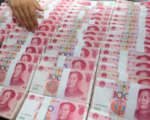China is bracing for a bustling Golden Week travel season, with the Ministry of Transport estimating 1.94 billion inter-city trips during the National Day holiday. This figure slightly surpasses last year’s total, indicating a potential recovery in domestic travel. However, persistent economic challenges, including a real estate downturn and rising unemployment, are expected to dampen consumer spending during this traditionally high-spending period.
Shaun Rein, founder and managing director of China Market Research Group, notes that while travel volume might surpass 2019 levels, spending per traveler is expected to decline. Consumers are adopting a more cautious approach, cutting back on expenditures amid economic uncertainty. Rein attributes this frugality to concerns about unstable income levels, with many Chinese opting to save until they see consistent economic improvements.
Data from Trip.com supports this trend, with both hotel and flight prices falling below last year’s levels. Prices for domestic and international flights have dropped compared to 2022, reflecting a broader trend of travelers seeking more budget-friendly options. The National Railway Administration expects 175 million rail trips during the Golden Week, as more people turn to lower-cost transportation. This year’s rail passenger volume is predicted to peak at over 21 million on Tuesday, surpassing the previous record of 20.7 million set during the Labor Day holiday in May.
Despite lower spending per traveler, there are signs of a modest uptick in tourism overall. Alicia Garcia Herrero, chief economist at Natixis, suggests that this year’s slight rise in tourism spending should be viewed in the context of last year’s relatively low base. During last year’s Golden Week, domestic tourism revenue reached 753 billion yuan ($107.37 billion), a 1.5% increase from 2019. Although total spending is on the rise, frugality remains a theme for many travelers.
China’s tourism sector has seen some recovery in 2023. The Ministry of Culture and Tourism reports a 16.8% increase in domestic trips over the first three quarters of the year, with 4.29 billion trips taken. Tourism revenue has also risen by 17.1%, reaching 4.32 trillion yuan ($615.6 billion). Inbound passenger trips have grown by 55.4%, totaling 95 million for the year to date.
While these numbers reflect gradual improvement, the post-pandemic recovery has been uneven. For example, during the May Labor Day holiday, China saw more trips and higher total spending than in 2019, but the average spending per traveler remained lower than pre-pandemic levels. The effects of the COVID-19 pandemic, combined with broader economic uncertainty, continue to influence consumer behavior.
To address these economic challenges, Chinese officials recently introduced new stimulus measures, including a 50-basis-point reduction in banks’ reserve requirement ratio, aimed at boosting liquidity. Shaun Rein anticipates that these measures could lead to a significant rebound in consumer spending during the upcoming Chinese New Year once the latest round of economic support is fully absorbed.


















